Knowledge Center
March 9, 2023
The Ultimate Guide to Lithotomy Position
Achieving a proper patient position while maintaining patient comfort and safety is key. When the patient is in the appropriate position, access to the surgical site is improved and the ability to perform the procedure is enhanced. To decrease the risk associated with patient positioning, it is important to understand the position, patient risk factors, and environmental risk factors. Lithotomy Position is one of the common positions used during many surgeries and in childbirth.
In this article you will learn:
- What is Lithotomy Position and the procedures its used for
- Lithotomy Position during childbirth and surgeries
- How do you place a patient in a Lithotomy Position
- Complications
- Common variations
- Alternative positions to Lithotomy Position during childbirth
- Lithotomy Positioning Devices
What is the Lithotomy Position?
The Lithotomy Position is similar to the supine position of the body when the patient is face-up, arms to the sides, but the legs are separated, raised, and supported in a boot-style leg holder or stirrup-style position. The most common procedures performed in the Lithotomy position are:
- Gynecological
- Urologic
- Colorectal
- Perineal, or Pelvis Procedures
Lithotomy position during childbirth
The Lithotomy Position can be used during childbirth since it provides the doctor with good access to the mother and the baby. It was used as the standard position for childbirth procedures, but recently, most hospitals have shifted to using birthing beds or chairs.
Studies have shown that Lithotomy Position can cause more pain for the woman in the second or third stage of labor vs other alternative positions like squatting positions.1
Lithotomy position during surgery
Types of surgery that utilize the Lithotomy Position
Lithotomy Position is used during many operations including, but limited to:
- Urethral Surgery
- Colon Surgery
- Removal of the bladder, and rectal or prostate tumors
- Vaginal, cervical, and uterine surgical procedures
How do you place a patient in a Lithotomy Position?
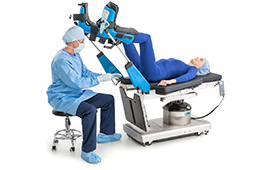
Image (2)
Complications associated with the Lithotomy Position
Like other patient positions, the Lithotomy Position can be associated with a patient increased risk for some strains or injuries, whether used during childbirth or surgery.
Complications during childbirth
- Increased chance of needing an episiotomy which is cutting the tissue between the vagina and anus, also called the perineum2
- Increased chance of needing a Caesarian section or forceps
- Increased chance of getting a sphincter injury due to increased pressure3
Complications during surgery
- Acute Compartment Syndrome when pressure increases within a specific area of your body4
- Nerve Injury5: includes two common injuries:
- Peripheral (peroneal) nerve injury increases with the length of surgery. Symptoms include ankle extension, ankle eversion, and foot dorsiflexion.
- Lateral femoral nerve injury which leads to lateral thigh pain or meralgia paresthetica.
- Other common injuries include hip dislocation, tendon and/or muscle strain, low back strain, Sciatic nerve injury, and pressure injuries. Learn about pressure injuries in our Pressure Ulcer Staging and Prevention Guide
Learn about Dabir Technology for pressure injury (ulcer) prevention
Common variations of the Lithotomy Position
The Lithotomy Position can take different variations depending on the type of surgical operation being held.
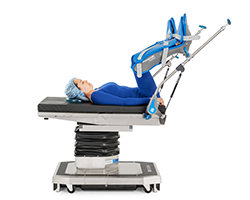
High Lithotomy Position
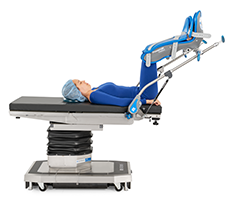
Standard Lithotomy Position
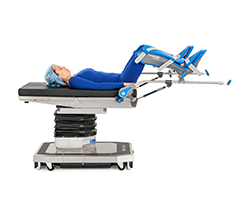
Low Lithotomy Position
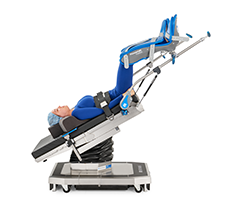
Tilted Lithotomy Position (Trendelenburg Position)
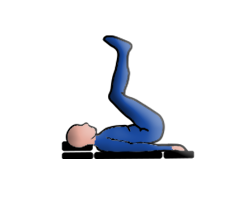
Exaggerated Lithotomy Position
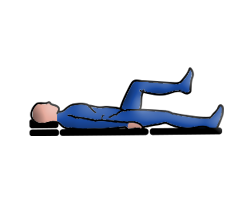
Hemi (split) Lithotomy Position
For more info on patient positioning in lithotomy and other patient positions, download our Patient Positioning Instructions Quick Reference Guide
Alternative positions to the Lithotomy Position during childbirth
With risk factors associated with Lithotomy Position during childbirth, alternative positions have been adopted and proven to be less risky for women’s health. Some of these alternatives are:
- Standing
- On hands and knees/ leaning forward
- Squatting
- Sitting
- Lying on side
Modified Dorsal Lithotomy Position
The modified dorsal lithotomy position is excellent for radical pelvic operations. The use of modified Krauss arm supports as stirrups, along with pneumatic devices that intermittently compress the legs, significantly reduces postoperative morbidity in patients who undergo operations in this position.
Lithotomy Position vs. Supine Position
The two positions share similarities in the positioning of the back and head; the patient lays flat facing up and the arms placed to the sides. In Lithotomy positioning, the legs are separated and raised. In Supine positioning, the legs stay flat with no separation.
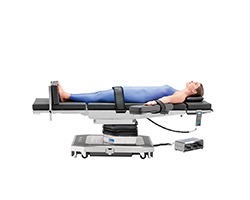
Supine Position
Lithotomy Position
Lithotomy Positioning Devices
Conclusion
In conclusion, the Lithotomy Position is a common position used in childbirth and surgeries to allow access to the proximal lower extremity or genitoperineal region. It comes with risks that can make it dangerous in some cases. Other positions can be considered as alternatives for Lithotomy sometimes to avoid complications.
Contributors

Lena Fogle BSN, RN, CNOR
Senior Director Global Clinical Solutions, STERIS Healthcare
Lena is a seasoned healthcare leader with extensive experience leading complex perioperative environments as well as new program development, continuous process improvement, clinical outcomes, operational excellence, and stakeholder experience.
References:
1 Comparative study on the influence of three delivery positions on pain intensity during the second stage of labor. 2016 Jul-Aug; 21(4): 372–378
https://www.ncbi.nlm.nih.gov/pmc/articles/PMC4979260/
2https://www.ncbi.nlm.nih.gov/pmc/articles/PMC4877173/
3 https://www.ncbi.nlm.nih.gov/pmc/articles/PMC4600206/
4Karmaniolou I, et al. (2010). Compartment syndrome as a complication of the lithotomy position
caribbean.scielo.org/scielo.php?script=sci_arttext&pid=S0043-31442010000600017
5 Kuponiyi O, et al. (2014). Nerve injuries associated with gynecological surgery.
DOI: 10.1111/tog.12064


